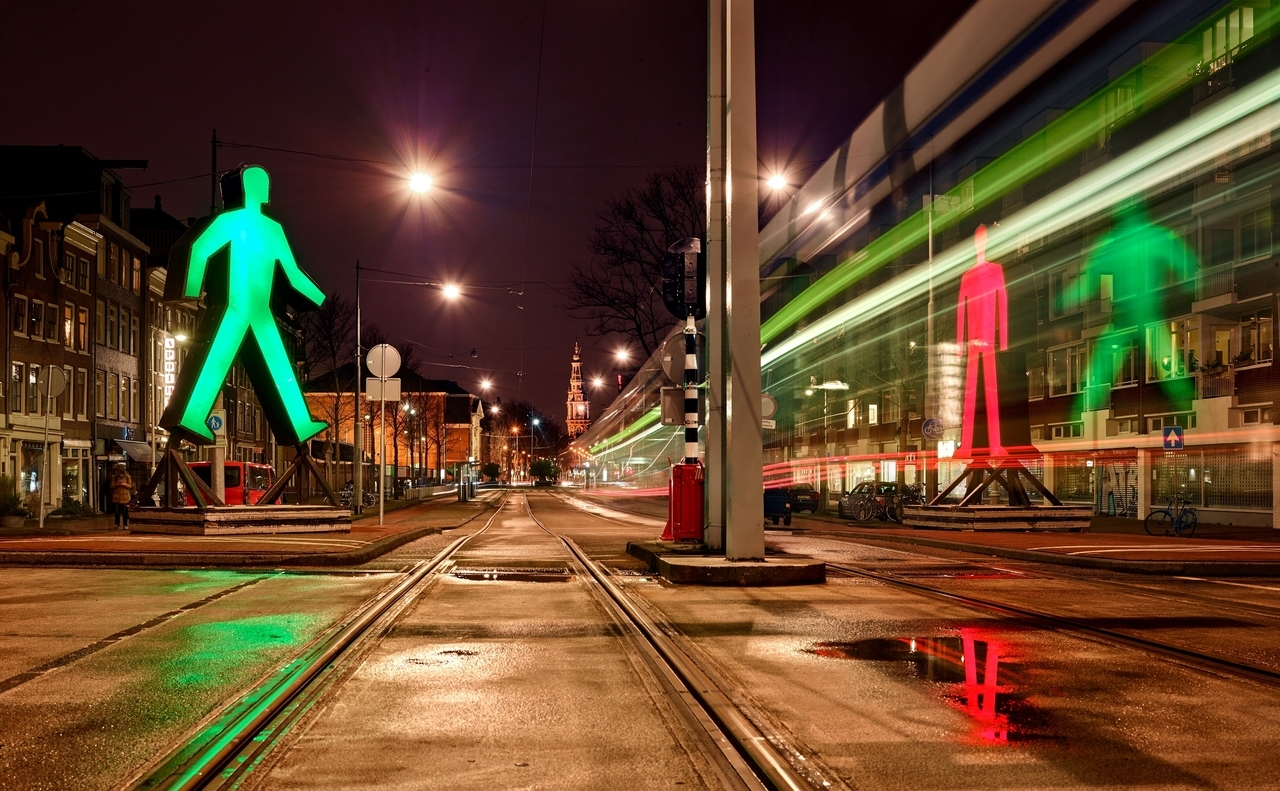Strangers in the Light
The little figures we know from pedestrian traffic lights (one red and one green), that we sometimes impatiently have to wait on, are more than just icons in the installation Strangers in the Light.
Artists Victor Engbers and Ina Smits, who have worked together to create several large installations for festivals and exhibitions, have enlarged the figures into 4,5 meter tall sculptures, whereby they lose their original function of telling you whether you can cross the street or have to wait.
The figures have become characters in their own story. They have to come to life and have escaped from their ‘black box’, where they meet each other for the first time on the street. They have been trapped in a traffic light, escaping each other again and again as one disappeared when the other appeared. Who knows, they may become friends or even fall in love, like in Frank Sinatra’s song that inspired the title of this artwork: We were strangers in the night / Up to the moment when we said our first hello / Little did we know / Love was just a glance away, a warm embracing dance away.
But Egbers and Smits demonstrate something else, namely, the importance of the light that the figures emit. The green and red lights, which have been used in traffic lights since the beginning of the 20th century, are essential communication tools on the road, railways, and on the water. Not only do these lights determine the pace at which we move through and between cities and villages but they ‘direct’ human flow. Light signals ensure safety and order in an increasingly mobile world in which we travel more frequently and further away. That’s quite compelling.
